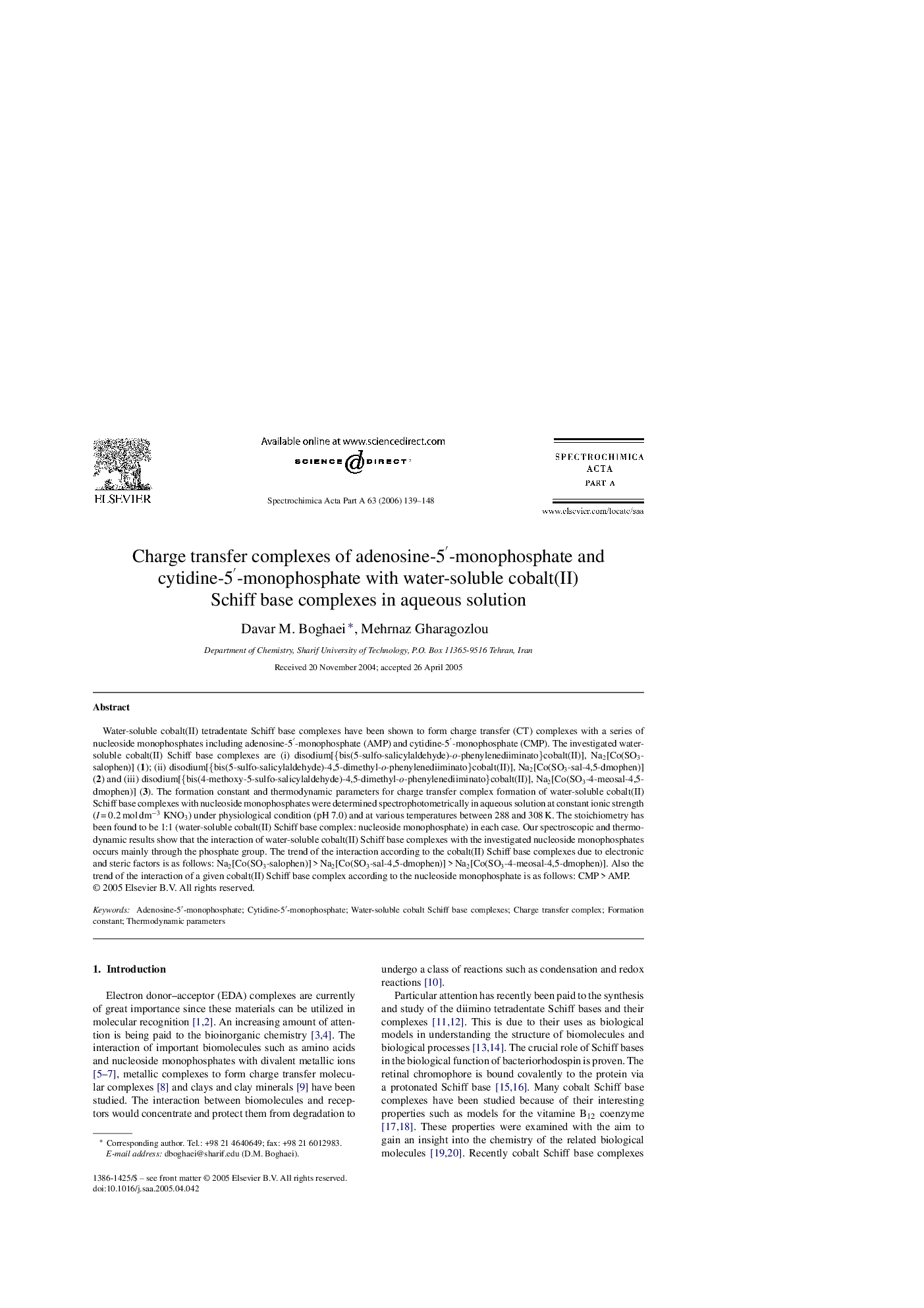| Article ID | Journal | Published Year | Pages | File Type |
|---|---|---|---|---|
| 1236903 | Spectrochimica Acta Part A: Molecular and Biomolecular Spectroscopy | 2006 | 10 Pages |
Water-soluble cobalt(II) tetradentate Schiff base complexes have been shown to form charge transfer (CT) complexes with a series of nucleoside monophosphates including adenosine-5′-monophosphate (AMP) and cytidine-5′-monophosphate (CMP). The investigated water-soluble cobalt(II) Schiff base complexes are (i) disodium[{bis(5-sulfo-salicylaldehyde)-o-phenylenediiminato}cobalt(II)], Na2[Co(SO3-salophen)] (1); (ii) disodium[{bis(5-sulfo-salicylaldehyde)-4,5-dimethyl-o-phenylenediiminato}cobalt(II)], Na2[Co(SO3-sal-4,5-dmophen)] (2) and (iii) disodium[{bis(4-methoxy-5-sulfo-salicylaldehyde)-4,5-dimethyl-o-phenylenediiminato}cobalt(II)], Na2[Co(SO3-4-meosal-4,5-dmophen)] (3). The formation constant and thermodynamic parameters for charge transfer complex formation of water-soluble cobalt(II) Schiff base complexes with nucleoside monophosphates were determined spectrophotometrically in aqueous solution at constant ionic strength (I = 0.2 mol dm−3 KNO3) under physiological condition (pH 7.0) and at various temperatures between 288 and 308 K. The stoichiometry has been found to be 1:1 (water-soluble cobalt(II) Schiff base complex: nucleoside monophosphate) in each case. Our spectroscopic and thermodynamic results show that the interaction of water-soluble cobalt(II) Schiff base complexes with the investigated nucleoside monophosphates occurs mainly through the phosphate group. The trend of the interaction according to the cobalt(II) Schiff base complexes due to electronic and steric factors is as follows: Na2[Co(SO3-salophen)] > Na2[Co(SO3-sal-4,5-dmophen)] > Na2[Co(SO3-4-meosal-4,5-dmophen)]. Also the trend of the interaction of a given cobalt(II) Schiff base complex according to the nucleoside monophosphate is as follows: CMP > AMP.
